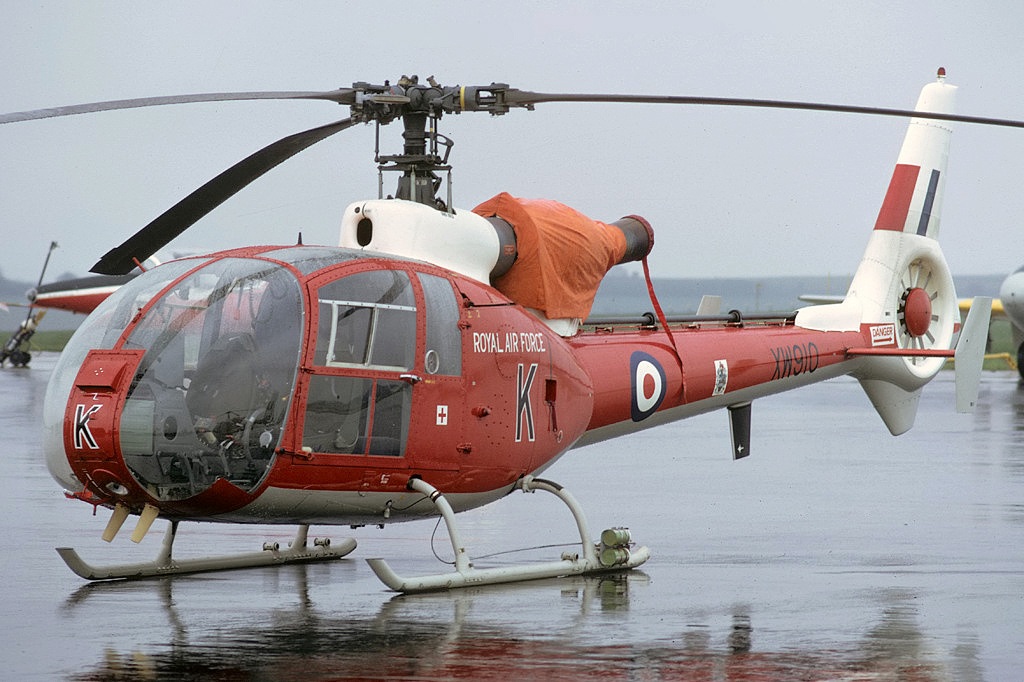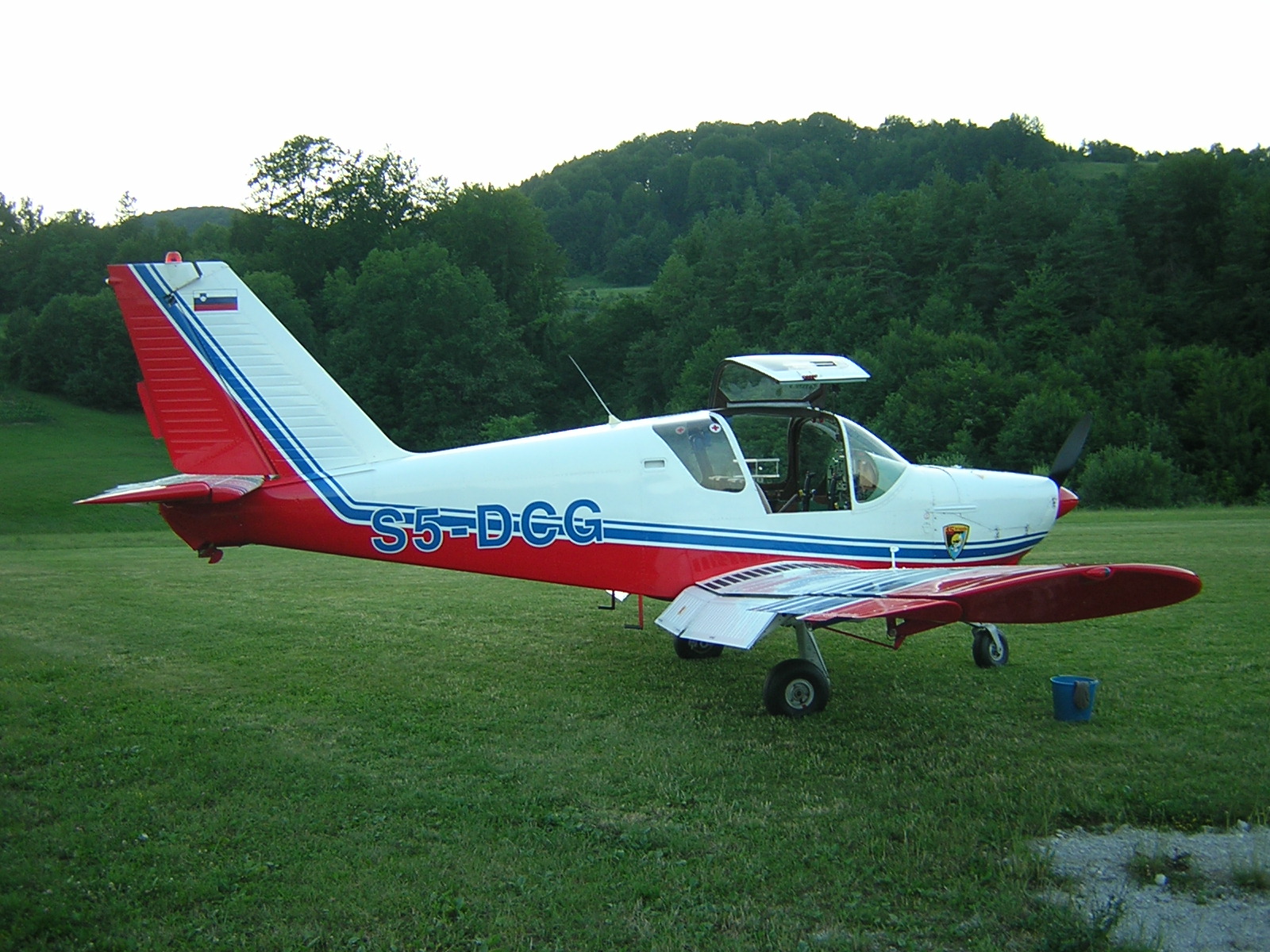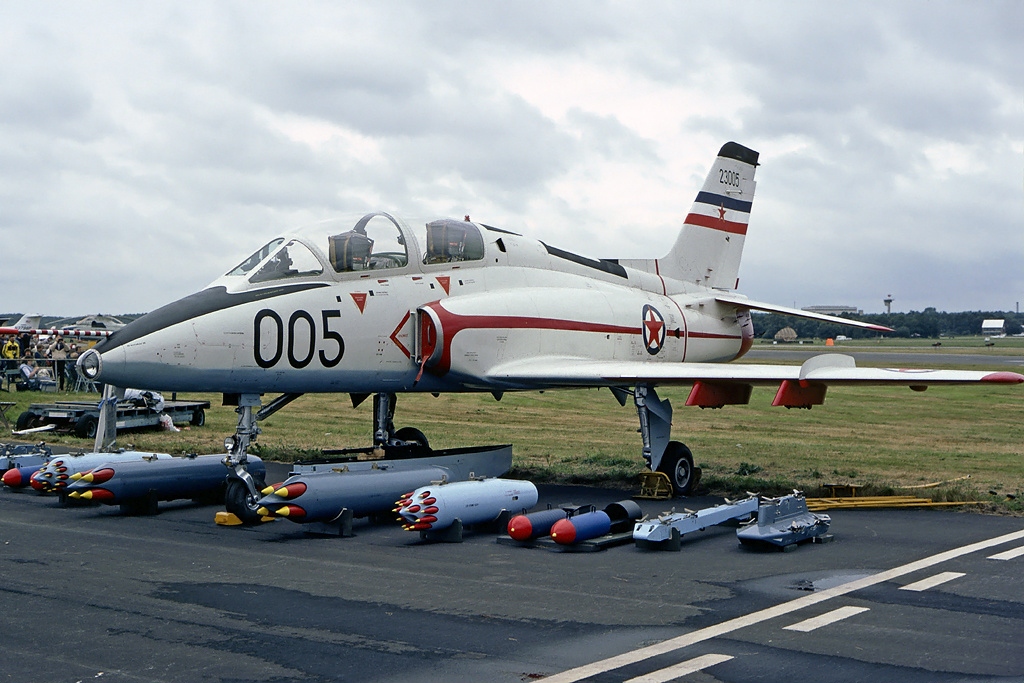|
Golubovci Airbase
The Podgorica Airbase (also known as Golubovci Airbase) is an active airbase in Montenegro. The airbase facilities are shared with Montenegro's main international airport, Podgorica Airport. It is the main base of the air arm of the Military of Montenegro. During the Yugoslav era, it was the home to the 172nd Aviation Brigade of Yugoslav Air Force and its main flying training base for primary and basic pilot training. Overview Podgorica Airbase shares the main runway with nearby Podgorica Airport, and has a large ramp attached to the taxiway, used exclusively for military aircraft. Part of the military complex was also 08/26 runway, which was not used by civilian planes. It is connected to the main 18/36 runway by 3 km long taxiway, and is located adjacent to Šipčanik Hill, near the town of Tuzi. The hill doubled as an underground aircraft shelter. Airbase facilities were frequent target of 1999 NATO bombing. Fuel tanks and the aircraft ramps were extensively targeted, ... [...More Info...] [...Related Items...] OR: [Wikipedia] [Google] [Baidu] |
Montenegrian Air Force Golubovci Airbase
Montenegrin may refer to: * Adjective for anything related to Montenegro * Demonym referring to the people of Montenegro, see Demographics of Montenegro * Ethnonym, referring to Montenegrins, the ethnic group associated with Montenegro * Montenegrin language, a variety of Serbo-Croatian spoken by ethnic Montenegrins * Montenegrin (party), a liberal political party in Montenegro See also * Montenegrin Campaign (World War I) * Montenegrin Cup (women), the national women's association football cup competition in Montenegro. * Montenegrin Football Championship (1922–1940) * Montenegrin Football Championship (1925-1940) * Montenegrin Prince-Bishop * Montenegrin Republic Cup (1947–2006), cup competition for Montenegrin lower-tier clubs * Montenegrin independent championship (1992–99), the unofficial football and futsal competition in Montenegro, *Montenegrins (other) *Montenegro (other) * Montenegrin people (other) * Montenegrin Church (other) ... [...More Info...] [...Related Items...] OR: [Wikipedia] [Google] [Baidu] |
1999 NATO Bombing Of The Federal Republic Of Yugoslavia
The North Atlantic Treaty Organization (NATO) carried out an aerial bombing campaign against the Federal Republic of Yugoslavia during the Kosovo War. The air strikes lasted from 24 March 1999 to 10 June 1999. The bombings continued until an agreement was reached that led to the withdrawal of Yugoslav armed forces from Kosovo, and the establishment of the United Nations Interim Administration Mission in Kosovo, a UN peacekeeping mission in Kosovo. The official NATO operation code name was Operation Allied Force whereas the United States called it Operation Noble Anvil; in Yugoslavia the operation was incorrectly called Merciful Angel ( sr, Милосрдни анђео / ''Milosrdni anđeo''), possibly as a result of a misunderstanding or mistranslation.RTS"Порекло имена 'Милосрдни анђео'" ("On the origin of the name 'Merciful Angel'"), 26 March 2009 NATO's intervention was prompted by Yugoslavia's bloodshed and ethnic cleansing of Albanians, which dr ... [...More Info...] [...Related Items...] OR: [Wikipedia] [Google] [Baidu] |
Airports In Montenegro ...
This is a list of airports in Montenegro, grouped by type and sorted by location. Passenger statistics Airports with number of passengers served. Airports Airports shown in bold have scheduled service on commercial airlines. See also * Transport in Montenegro * List of airports by ICAO code: L#LY – Serbia and Montenegro * Wikipedia:WikiProject Aviation/Airline destination lists: Europe#Montenegro References *AERODROMI u PDF formatu* * * – includes IATA codes * – IATA and ICAO codes * – IATA, ICAO and DAFIF codes {{List of airports in Europe Montenegro Airports Airports Montenegro ) , image_map = Europe-Montenegro.svg , map_caption = , image_map2 = , capital = Podgorica , coordinates = , largest_city = capital , official_languages = M ... [...More Info...] [...Related Items...] OR: [Wikipedia] [Google] [Baidu] |
Mil Mi-8
The Mil Mi-8 (russian: Ми-8, NATO reporting name: Hip) is a medium twin-turbine helicopter, originally designed by the Soviet Union in the 1960s and introduced into the Soviet Air Force in 1968. It is now produced by Russia. In addition to its most common role as a transport helicopter, the Mi-8 is also used as an airborne command post, armed gunship, and reconnaissance platform. Along with the related, more powerful Mil Mi-17, the Mi-8 is among the world's most-produced helicopters, used by over 50 countries. As of 2015, when combined the two helicopters are the third most common operational military aircraft in the world. Design and development Mikhail Mil originally approached the Soviet government with a proposal to design an all-new two-engined turbine helicopter in 1959 after the success of the Mil Mi-4 and the emergence and effectiveness of turbines used in the Mil Mi-6. After design and development, the Mi-8 was subsequently introduced into the Soviet Air For ... [...More Info...] [...Related Items...] OR: [Wikipedia] [Google] [Baidu] |
Aérospatiale Gazelle
The Aérospatiale Gazelle (company designations SA 340, SA 341 and SA 342) is a French five-seat helicopter, commonly used for light transport, scouting and light attack duties. It is powered by a single Turbomeca Astazou turbine engine and was the first helicopter to feature a fenestron tail instead of a conventional tail rotor. It was designed by Sud Aviation, later Aérospatiale, and manufactured in France and the United Kingdom through a joint production agreement with Westland Aircraft. Further Licensed production, manufacturing under license was performed by SOKO in Yugoslavia and the Arab British Helicopter Company (ABHCO) in Egypt. Since being introduced to service in 1973, the Gazelle has been procured and operated by a number of export customers. It has also participated in numerous conflicts around the world, including by Syria during the 1982 Lebanon War, by Rwanda during the Rwandan Civil War in the 1990s, and by numerous participants on both sides of the 1991 Gulf ... [...More Info...] [...Related Items...] OR: [Wikipedia] [Google] [Baidu] |
Lola Utva 75
The UTVA 75 is a compact, low-wing monoplane, piston-engine aircraft manufactured by UTVA. It is mainly used as a military basic trainer and sporting aircraft. Development The Utva 75 made its maiden flight in 1976. Between 1978 and 1985, a total of 136 Utva 75s were produced for the former Yugoslav Air Force. Following the breakup of Yugoslavia, many were passed on to successor states. Design Designed in 1975 to replace the UTVA Aero 3 as the primary basic trainer in the Yugoslav Air Force. Utva 75 is low-wing all-metal utility airplane. Wings are cantilever, rectangular with main and aux. wing spar and the integral fuel cells located between them. Dihedral is 6 degrees, NACA65 415 wing section.There is one underwing hardpoint on each wing for dop tanks carriage or additional weapon stores. Landing gear is non-retractable with oleo-pneumatic shock-absorbers. It features upward opening gull-wingtype access doors to the two-seat side-by-side cockpit. Another characteristic ... [...More Info...] [...Related Items...] OR: [Wikipedia] [Google] [Baidu] |
Yugoslav People's Army
The Yugoslav People's Army (abbreviated as JNA/; Macedonian and sr-Cyrl-Latn, Југословенска народна армија, Jugoslovenska narodna armija; Croatian and bs, Jugoslavenska narodna armija; sl, Jugoslovanska ljudska armada, JLA), also called the Yugoslav National Army, was the military of the Socialist Federal Republic of Yugoslavia and its antecedents from 1945 to 1992. Origins The origins of the JNA started during the Yugoslav Partisans of World War II. As a predecessor of the JNA, the People's Liberation Army of Yugoslavia (NOVJ) was formed as a part of the anti-fascist People's Liberation War of Yugoslavia in the Bosnian town of Rudo on 22 December 1941. After the Yugoslav Partisans liberated the country from the Axis Powers, that date was officially celebrated as the "Day of the Army" in the Socialist Federal Republic of Yugoslavia (SFR Yugoslavia). In March 1945, the NOVJ was renamed the "Yugoslav Army" ("''Jugoslavenska/Jugoslovenska Armija' ... [...More Info...] [...Related Items...] OR: [Wikipedia] [Google] [Baidu] |
Plantaže
Plantaže ( cnr, Плантаже, ; MNSEPLAP is a Montenegrin wine and grape brandy producer. Overview ''AD Plantaže'', a joint stock company presently incorporated into Holding company "Agrokombinat 13 jul", is the biggest Montenegrin viticultural and winemaking company, and one of the biggest companies in Montenegro overall. The company is based in the Montenegrin capital of Podgorica. It was founded in 1963, and deals with the production of wine and table grapes, peach, production and distribution of wine and grape brandies, fish farming, catering and retail trade. The most important segment of the company is related to the production of grapes and wine, and it owns one of the largest vineyards in Europe with over surface, covered with more than 11 million grapevines. The vineyards are situated in the ''Ćemovsko polje'', a flat and sunny area located south of Podgorica. AD Plantaže is one of the largest producers of grapes and wine in the region, with an annual product ... [...More Info...] [...Related Items...] OR: [Wikipedia] [Google] [Baidu] |
Wine Cave
Wine caves are subterranean structures for the storage and the aging of wine. They are an integral component of the wine industry worldwide. The design and construction of wine caves represents a unique application of underground construction techniques. The storage of wine in extensive underground space is an extension of the culture of wine cellar rooms, both offering the benefits of energy efficiency and optimum use of limited land area. Wine caves naturally provide both high humidity and cool temperatures, which are key to the storage and aging of wine. History The history of wine cave construction in the United States dates back to the 1860s in Sonoma, and the 1870s in the Napa Valley region. In 1857, Agoston Harazsthy founded Buena Vista Winery and in 1862, Buena Vista Winery's Press House was completed, and in 1864, a second building now called the Champagne Cellars was completed. In total, Buena Vista Winery had five caves among the two buildings in operation in 1864. ... [...More Info...] [...Related Items...] OR: [Wikipedia] [Google] [Baidu] |
G-4 Super Galeb
The Soko G-4 Super Galeb ( en, Super Seagull), also referred to as N-62, is a Yugoslav single-engine, advanced jet trainer and light ground-attack aircraft designed by the Aeronautical Technical Institute at Žarkovo and manufactured by the SOKO aircraft factory in Mostar. The Super Galeb was developed during the 1970s as a successor to, and replacement of, the Soko G-2 Galeb then in service with the Yugoslav Air Force ( sr-Latn, Ratno vazduhoplovstvo i protivvazdušna odbrana – RV i PVO; hr, Ratno zrakoplovstvo i protuzračna obrana – RZ i PZO). On 17 July 1978, the maiden flight was performed by a development aircraft, designated ''G-4 PPP''; during 1983, the first ''G-4'' made its first flight. Quantity production of the type commenced in 1984; the assembly line operated up until the breakup of Yugoslavia in 1991. A total of 85 aircraft were built, most of which went into service with the Yugoslav Air Force, although six G-4s were exported to Myanmar. During the Yugos ... [...More Info...] [...Related Items...] OR: [Wikipedia] [Google] [Baidu] |
Leteće Zvezde
The Leteće zvezde (Serbian Cyrillic: Летеће звезде, en, Flying Stars) was the official aerobatic flight display team of the Yugoslav Air Force. History Predecessors Yugoslavia has a long history of precision display flying which was first demonstrated to the public during an airshow at Zemun – Belgrade's military airfield – in June 1938. After World War II, a pair of SFR Yugoslav Air Force Jungmeisters made regular appearances at air displays in the late 1940s. These were followed by team of three Yakovlev Yak-3s, a five-plane grouping of the Ikarus S-49Cs (redesigned IK-3s) and in the late 1950s, the Air Force's first jet display team, flying F-84G Thunderjets. A new team formed by the 204th Fighter Aviation Regiment based at Batajnica (the unit's Canadair Mk 4 Sabers being responsible for the defense of Belgrade) flew over a crowd of 200.000 spectators attending the 1960 Belgrade Air show held at Zemun. This team lasted for five years until a four–shi ... [...More Info...] [...Related Items...] OR: [Wikipedia] [Google] [Baidu] |
Tuzi
Tuzi ( cnr, Tuzi/Тузи, ; sq, Tuz or ''Tuzi'') is a small town in Montenegro and the seat of Tuzi Municipality, Montenegro. It is located along a main road between the city of Podgorica and the Albanian border crossing, just a few kilometers north of Lake Skadar. The Church of St. Anthony and Qazimbeg's Mosque are located in the centre of the town. Tuzi is the newest municipality in Montenegro, having been an independent municipality since 1 September 2018. Geography Tuzi is situated to the northwest of Lake Shkodra, 10 km from Podgorica, 150 km from Dubrovnik (Croatia) and 130 km to Tirana (Albania). It is surrounded by forests and mountains that are further connected with the Accursed Mountains. History The town of Tuzi is situated in Southeastern Montenegro, between Podgorica and the Skadar lake. The Albanian community of Tuzi descend from the surrounding tribes of Hoti, Gruda, Trieshi and Koja, which are part of the Malësor tribes. Tuzi was mentioned ... [...More Info...] [...Related Items...] OR: [Wikipedia] [Google] [Baidu] |







